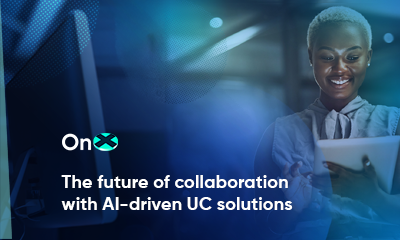
Creation and consumption of digital data is accelerating at a rapid pace. According to Statista, worldwide data traffic is expected to top 77 exabytes per month by 2022, nearly double the expected load for 2020 and more than six times that of 2017.
This alone is a significant challenge for the average enterprise, but when you couple this with the fact that data infrastructure and processes are expected to become leaner, less costly, and to perform at a higher level, the future looks challenging. This produces a catch-22 for enterprises because under a traditional IT model, more data requires more infrastructure and more technical staff, which only increases complexity to the point where data processing and overall performance is diminished, not enhanced.
Forward-leaning automation
Clearly, automation will have to play a larger role in the data center and in the cloud if the enterprise stands any chance of fulfilling the demands of an increasingly connected user base. Red Hat has taken a leadership position in IT automation with its Red Hat Ansible Automation Platform, delivering new levels of operational efficiency and scalable performance while relieving staffers of many of their daily management responsibilities in order to concentrate on more strategic objectives.

Red Hat Ansible Automation Platform consists of three main components, all of which focus on converting today’s disparate collection of in-house and cloud-based resources into a cohesive data ecosystem.
The automation component, for instance, creates a scalable, secure implementation for describing, building, and managing enterprise applications across multiple data architectures. This is supported by the cloud services component, which enables the team collaboration and granular analytics that are needed to automate heterogeneous environments in a hybrid cloud setting. Finally, the Ansible Content Collections component allows native platforms and supported content to be extended to and quickly adopted by newly automated domains.
Red Hat has gone to great lengths to prevent Ansible from suffering the same problem that plagues other automation systems, that is, management of the automation functions becomes just as difficult as managing infrastructure. To that end, the Red Hat Ansible Tower user interface provides a streamlined control panel, as well as integrated notifications and enhanced role-based permission capabilities. It also easily integrates into legacy environments using either the REST API or the traditional command line interface (CLI).
Ansible’s open source roots provide a foundation to help oversee all major tasks of IT infrastructure management, including configuration management, application deployment, service orchestration, and provisioning. Ansible is also outfitted with a wide set of development support capabilities designed to streamline the creation and integration of new apps and services into production environments. The platform is capable of orchestrating rolling software updates throughout various architectural tiers while also providing a unified version control mechanism that tracks playbook changes, runs tests, and automatically applies new configurations to production environments.
Keeping control
The Ansible automation engine itself is fully open-source and oversees all major tasks of IT infrastructure management, including configuration management, application deployment, service orchestration, and provisioning. Ansible is also outfitted with a wide set of development support capabilities designed to streamline the creation and integration of new apps and services into production environments. The platform is capable of orchestrating rolling software updates throughout various architectural tiers while also providing a unified version control mechanism that tracks playbook changes, runs tests, and automatically applies new configurations to production environments.
All of these components support advanced continuous integration/continuous deployment (CI/CD) methodologies that allow organizations to streamline app development and patching without the need for costly downtime or expansive update packages. In this way, users receive a steadily improving experience without interruption.
In today’s digital economy, speed and flexibility are the keys to success, but traditional manual oversight of IT infrastructure is simply not up to the challenge. Only through automation can the enterprise hope to build a lasting legacy of digital success by fostering rapid service development, high levels of resource utilization, and more effective use of IT personnel.
Contact us for more information on how OnX can optimize deployment and operation of your Ansible Automation Platform.














